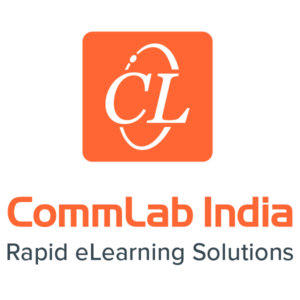How Can Blended Learning Personalize Your L&D Program?
Embracing personalized blended learning is a crucial step for organizations seeking to stay ahead in the ever-changing business landscape. In this article, we will explore the concept of personalized blended learning and how it can be leveraged to cater to learners’ individual needs and empower them to take charge of their development.
eBook Release
AI-Driven Personalized Learning – Revolutionizing Blended Learning
AI tools and technologies are making L&D more personal and contextualized. Explore how these insights can improve your blended learning programs.
Top Benefits Of Blended Personalized Learning
Leverages Personalized Blended Learning For Employee Performance and Assessment
Blended learning combines the best of both worlds by integrating online and offline learning experiences to create a holistic learning environment. Personalized blended learning takes this a step further by tailoring the learning experience to individual learners based on various factors, including performance and assessment scores, preferences, interests, and location. This type of learning leverages employee performance and assessment scores to identify gaps and provide targeted training interventions.
Reinforces Learning With VILT Activities
VILT provides learners with the flexibility to participate in live online sessions led by an instructor. This approach allows for real-time interaction, clarification of doubts, and engagement with peers. By offering VILT options, organizations can accommodate different learning preferences and schedules, ensuring that learners have access to instructor-led guidance when needed. These activities can take the form of interactive modules, simulations, quizzes, or online discussions. This reinforcement aids in long-term retention and improves the transfer of learning to the workplace.
Caters To Unique Individual Needs And Preferences
Personalized blended learning recognizes that each learner has unique needs and preferences. One of the key advantages of personalized blended learning is its ability to cater to the specific needs of each learner. For instance, if an employee struggles with a particular topic, additional virtual training activities can be offered to reinforce their understanding. This approach ensures that learners receive the support they need to succeed. To maximize training ROI, organizations can employ adaptive learning technologies that adapt to the content and delivery mode based on employees’ progress and performance.
Takes Individual Preferences And Interests Into Account
Personalized blended learning also considers learners’ preferences and interests when designing training programs. Recognizing that different individuals have varying motivations and learning styles, organizations can customize the content to align with employees’ growth aspirations, technological interests, and desired skill development. Taking into account employees’ preferences and interests particularly helps in terms of growth, technology, and skills by understanding individual motivations and learning styles. This personalized approach fosters higher engagement and motivation, leading to enhanced knowledge retention and application in the workplace.
Accounts For Hybrid Working And Adapts To The Place Of Working
In today’s globalized workforce, employees may be dispersed across different geographical locations. Personalized blended learning recognizes this reality and adapts training programs accordingly. Virtual training activities provide the flexibility to reach learners regardless of their physical location. This adaptability ensures that training experiences remain consistent and tailored to employees across different locations. By eliminating geographical barriers, organizations can deliver effective training programs and enable seamless collaboration among geographically dispersed teams.
Empowers Learners To Lead
A central aspect of personalized blended learning is empowering learners to take an active role in the ownership of their development. This sense of autonomy fosters a proactive learning mindset and motivates the employees as they actively engage with the material that resonates with their unique needs and interests. Learners become more self-directed, seeking out resources, collaborating with peers, and taking initiative in applying newly acquired knowledge and skills.
Leveraging Blended Learning To Maximize Training ROI
Maximizing training ROI through personalized blended learning requires thoughtful integration of VILT options and virtual training activities. Customizing the learning experience to each individual’s needs leads to improved engagement, better knowledge retention, and application in the workplace. As learners feel more invested in their development, they are more likely to translate their newly acquired skills into tangible outcomes, ultimately benefiting both the employee and the organization.
Leveraging Technology:
- Technology plays a pivotal role in enabling personalized blended learning. LMS and virtual training platforms provide the infrastructure to deliver and manage training content effectively.
- Organizations must leverage analytics and data-driven insights to track learner progress, identify areas of improvement, and continuously refine the learning experience.
- Emerging technologies such as AI and machine learning (ML) can enhance personalization by offering adaptive content recommendations and intelligent feedback.
Data-Driven Insights:
- Data analytics plays a vital role in implementing personalized blended learning. Organizations can leverage LMS and analytics tools to gather and analyze data on employee performance, preferences, and location.
- Data-driven insights enable organizations to make data-driven decisions, identify trends, and continuously refine the learning experience.
- Data analysis also helps in monitoring the effectiveness of personalized blended learning initiatives and identifying areas for improvement.
Continuous Feedback And Iteration:
- Personalized blended learning encourages continuous feedback and iteration to enhance the learning experience.
- By gathering feedback from learners through surveys or interactive platforms, organizations can refine training programs to better meet individual needs.
- This iterative approach ensures that the content remains relevant and up-to-date, providing employees with the most effective learning experience possible.
Conclusion
By investing in personalized blended learning, organizations can optimize training outcomes, drive employee growth, and stay ahead in a rapidly evolving business landscape. Embracing technology and leveraging data-driven insights further enhances the effectiveness of this approach.
Download AI-Driven Personalized Learning – Revolutionizing Blended Learning today to discover how you can leverage AI to make learning personal. Also, join the webinar to learn how to launch AI-enabled blended learning for upskilling and reskilling.


